Probiotics and Oral Health
There are trillions of bacteria living in and on us. There are more bacterial cells than human cell in our body. And although the majority of them reside in our guts some microbes also live on our skin, nose, ears and mouth. It’s equally important to have a healthy microbiota not only in the gut but in other locations too. You probably know all the benefits of gut microbiota, which helps us digest food, boosts immune system, protects from pathogenic bacteria, synthesizes vitamins, neurotransmitters and provides other useful functions. Microbes that live in our mouth have a very similar job. So if you have a dysbiosis in your mouth it can slowly put your oral health at risk.
What is known about oral microbiota?
Oral microbiota is quite different from other microbial communities in different body sites.
Fig. 1 Differences between microbial communities based on anatomic sites and factors influencing dysbiosis of commensal microbiota. (A) Each mucosal site harbors distinct microbial community as indicated by principal coordinates plot (reproduced from (4)). Microbial populations within skin are more variable than those at other mucosal sites. Inhabitants within nasal cavity resembles those in skin. Lung microbiota was reported to be similar with those in oral cavity. (B) Several factors can cause perturbations of commensal microbiota, leading to the states of microbial dysbiosis, which is associated with allergic diseases. (source).
Research is showing that nasal microbiome resembles skin microbiome. While oropharynx microbiota is similar to the community of oral cavity and predominantly consists of Proteobacteria, Firmicutes and Bacteriodetes.
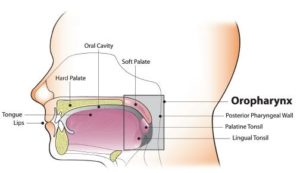 It is also thought that oral microbiome is the primary source that shapes lung microbiome (which is previously thought to be sterile – not anymore!). So as you can see most of the infections that land in the respiratory organs find their ways through our mouths. It is clear that certain viruses and pathogenic bacteria as well as weakened immune system are responsible for respiratory infections. However there is also a strong link between allergies and the state of our microbiota.
It is also thought that oral microbiome is the primary source that shapes lung microbiome (which is previously thought to be sterile – not anymore!). So as you can see most of the infections that land in the respiratory organs find their ways through our mouths. It is clear that certain viruses and pathogenic bacteria as well as weakened immune system are responsible for respiratory infections. However there is also a strong link between allergies and the state of our microbiota.
Therefore to avoid infections and allergies it is extremely important to keep our oral health in a great shape.
What are the key points to have healthy microbiome and great oral health? Oral microbiota is the second most important factor, so the right probiotics that can improve oral microbiota is also the key. Other environmental factors like tooth paste and quality and state of our tooth brushes is equally important. And I would say the most important factor is the food we are eating and our gut health.
Let’s discuss each point individually.
What is the best probiotic for oral health?
One of the best dental probiotics on the market in my opinion is PRO-Dental by Hyperbiotics. The same probiotic for children can be found here. And here is why I think it is the best.
- First of all there are two clinically studies strains of Streptococcus salivarius K12 and salivarius M18.
- salivarius M18 has been recently shown in a randomized controlled study that its use may reduce development of dental decay in children. And another study with the same strain demonstrated that S. salivarius M18 was able to reduce plaque score in children with existing dental decay and reduced S. mutans counts (bacterium which is associated to contributing to tooth decay) suggesting that this strain could provide great oral benefits if taken on a regular basis.
- salivarius K12 (also known as BLIS K12) has been described in 37 different peer-reviewed studies. This strain demonstrated its efficacy in reducing halitosis (bad breath) in children due to its antibacterial properties towards bacterial species implicated in halitosis. BLIS K12 strain was shown to inhibit the growth of such species as Eubacterium sulci, Streptococcus anginosis, Eubacterium saburreum, Micromonas micros, Atopobium parvulum, Parvimonas micra and Solobacterium moorei. In addition to this BLIS K12 plays a role in reducing the occurrence and/or severity of secretory otitis media and also in prevention of streptococcal and viral pharyngotonsillitis in children. So basically this bacterium is really good in preventing sore throat and other upper respiratory infections.
- In addition to this, Lactobacillus reuteri strain, which is also found in this probiotic formulation, has been shown to have inhibitory properties towards caries causing mutans and periodontal disease causing Tannerella forsythia. And a recent clinical study actually demonstrated that oral use of oral administration of lozenges with L. reuteri strain may be a useful adjunct to scaling and root planing in chronic periodontitis. It may also be helpful in pregnancy gingivitis according to this study, where the use of L. reuteri reduced Gingival Index and Plaque Index in women with gingivitis compared to a control group.
- Lactobacillus paracasei, found in PRO-dental probiotic, is a bacterium that should naturally be part of our oral microbiome. Recent research demonstrated that this bacterium can also reduce Streptococcus mutans in the mouth. Therefore its use can potentially reduce dental caries.
- Lactobacillus sakei is an anti-inflammatory Lactobacillus strain that was shown to help with atopic dermatitis-like skin lesions. It is also a very resilient probiotic strain that adapts very quickly to various new environments.
Some people may ask: “Do I really need to use an oral probiotic?” If your teeth are healthy, you do not have any issues with the smell in your oral cavity, you do not get sick with sore throat and your overall health is in an excellent condition then you can get away with just healthy diet rich in fermented foods.
What is the best toothpaste?
My personal favorite toothpaste is Doterra toothpaste containing blend of essential oils called On Guard. This toothpaste does not contain triclosan and fluoride like majority of other toothpastes. Check my article about triclosan and how it affects our microbiome and health in general. On contrary this paste contains essential oils that protect our teeth from tooth decay. You can purchase this toothpaste using this link.
My kids love this Kid’s Strawberry Toothpaste from Norwex. It is free from fluoride, parabens, sulfates, phosphates, harsh abrasives, gluten, artificial flavors or dyes and animal derived ingridients. Plus it tastes just like strawberry!
What is the best toothbrush?
Tooth brush is equally important. It collects all good bacteria when you brush your teeth as well as all bad bacteria that can cause tooth decay. Therefore I am using Silver Care Toothbrush from Norwex, which has a unique silver containing bristle base that self purifies tooth brush between uses. That way you won’t reinfect your mouth and teeth next time you brush your teeth.
Should I use the toothpaste with or without fluoride?
You might have a question at this point about fluoride. Will the toothpaste without fluoride do its job? Traditional dentists are claiming – yes, the toothpaste needs to contain fluoride; however, alternative medicine or holistic dentists suggesting not to use the toothpaste with the fluoride. And here is what I found while searching through tons of scientific literature.
- First of all think about the fact, that you cannot use fluoride toothpaste with children under 2 years of age because it can get them sick. Fluoride swallowed with the toothpaste may poison children. It is toxic. If it is toxic for kids it must be toxic for adults too. F.D.A. itself requires all toothpaste producers to put the following label on each toothpaste tube containing fluoride ”Warning: Keep out of the reach of children under 6 years of age. If you accidentally swallow more than used for brushing, seek professional assistance or contact a Poison Control Center immediately.”
- The topic is very controversial however the recent research suggests that we are consuming more fluoride with food and drinks than ever. So why would you increase this concentration even more with fluoride containing toothpaste? This is one of the most important issues in my opinion. Our tap water contains a lot of fluoride. And fluoride accumulates in our bodies. So if your child drinks a lot of tap water and foods that contain fluoride plus swallows the toothpaste with high concentration of fluoride he or she is getting a lot of fluoride already. Nowadays fluoride intake is definitely higher than it was previously thought and even exceeds normal value values. This article discusses that fluoride is not a normal constituent in our bodies and there is no nutritional or physiological value in it at all. On the contrary it explains that “the chief ingredient in normal teeth enamel is hydroxyapatite that contains calcium phosphate, not fluoride”.
- Here you can check if fluoride is contaminating your tap water. Fluoride is among 30 main contaminants present in Houston’s tap water.
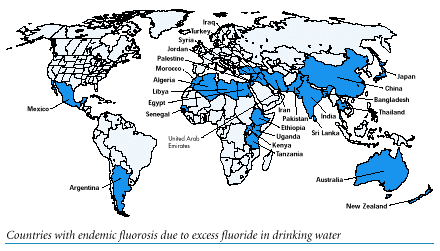 Fluoride can damage young teeth. This condition is called dental fluorosis. This recent study found that almost 47% of 124 tested schoolchildren (8-12 year olds) had dental fluorosis. Adult teeth are more resilient to this dangerous substance so it’s considered to be OK to use it. Also check this article from UNICEF (on page 11) regarding fluoride in water. “The latest information shows that fluorosis is endemic in at least 25 countries across the globe (see map).
Fluoride can damage young teeth. This condition is called dental fluorosis. This recent study found that almost 47% of 124 tested schoolchildren (8-12 year olds) had dental fluorosis. Adult teeth are more resilient to this dangerous substance so it’s considered to be OK to use it. Also check this article from UNICEF (on page 11) regarding fluoride in water. “The latest information shows that fluorosis is endemic in at least 25 countries across the globe (see map).
- Moreover this Harvard group demonstrated that fluoride affects neurodevelopment and cognitive development in children. Original article of this meta analysis study published in 2012 is here. Here is a newer study from 2015 demonstrating that dental fluorosis in kids is directly proportional to their IQ levels. Kids with fluorosis were not as smart as kids with healthy teeth. A very recent study from 2017 provided mechanisms on neurotoxicity of fluoride and its ability to change homeostasis of central nervous system.
- Lastly, does fluoride actually prevent tooth decay? It was not as easy to find a definite answer to my question. Based on the available studies effectiveness of fluoride is not a clear cut case. This analysis concluded that “there is moderate quality evidence of a large caries-inhibiting effect of fluoride gel in the permanent dentition”. This latest report actually showed that fluoride does not prevent caries in areas with unfluoridated water. My holistic dentist recommends to pick any as long as it doesn’t include any toxic ingredients including fluoride. In my opinion, there is enough scientific evidence to doubt fluoride safety. Now you can make your own conclusions regarding picking the right toothpaste for yourself and your loved ones.
What to eat or not to eat for good oral health?
So what factors determine the presence or absence of caries? A friend of mine and a holistic dentist, Teresa Scott (her website will soon be moving here), suggests that the “best solution to reduce tooth decay is eating less/no sugar, eat primarily whole foods, lots of good fats (they actually help protect teeth from growing bacteria) and high in probiotics foods diet (kefir, kombucha, kvass, sauerkraut, yogurt etc.).”
Well, let’s see what science has to tell about it.
- This study suggests that nor dental visits neither hygiene habbits are associated with high levels of cariogenic bacteria. The presence of caries in kids is associated with increased amounts of Streptococci and lower level of parents’ education! Here you go, nothing to do with fluoride. It is oral microbiome that plays an important role. Reduced numbers of good bacteria and increased numbers of pathogenic bacteria is a prefect environment for developing teeth caries.
- This study associates higher household socioeconomic status with less caries prevalence in children.
- Another study suggests that healthy eating habits, cod liver oil consumption and frequency of tooth brushing were protective factors against tooth decay.
- And this study suggests, that the likelihood of getting caries may also be genetically predetermined if you have certain types of genes present in your genome.
- A very interesting study of caries prevalence in historical populations demonstrated that rural inland populations that ate more cereal had more caries compared to costal population with mediterranian diet composed of fish, fruit and vegetables. That would make sense because Alpha-amylase, the enzyme that breaks does starch, is present in our saliva and can break down starch to simple sugar right in our mouth which is a food of preference for all pathogenic bacteria.
To sum it all up, to maintain good oral health one has to have a healthy diet that supports healthy oral and intestinal microbiomes. This diet should contain as little sugar as possible (in particular added sugars, so read your labels!), less cereal or starchy foods that can easily be broken down to simple sugar right in your mouth. Eat more vegetables and fruit containing complex carbohydrates that will feed only good bacteria. And of course practice frequent brushing of your teeth using toothpaste preferably without harmful ingredients such as fluoride and other toxic ingredients.

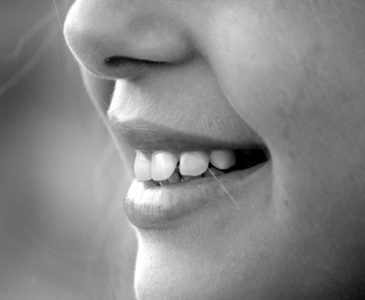
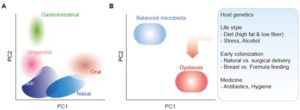
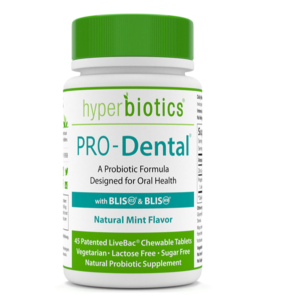
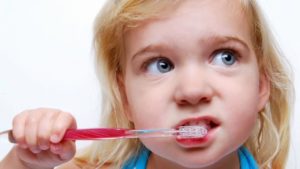
Can you give your opinion on this oral probiotic, please. http://m.uncleharrys.com/products/detail/probiotic-tooth-powder-28-g
Anastasia, Thank you for question. I could not open the link but if you are asking about this probiotic http://www.smallflower.com/uncle-harrys-natural-products/probiotic-tooth-powder-28g-10075728, then it only has one strain of probiotic and xylitol. I still think that there is no other probiotic on the market right now that could compete with Pro-Dental: http://amzn.to/2AvAv0S
The link you provided did not end in match any product.
I got pregnancy gingivitis on my 30w. That was terrible, I felt pain and hunger, hunger and pain. I realized I have Pro-Dental recommended by Karina and started to use it. I didn’t expect any magic I was ready to give a chance to any medicine that wouldn’t be harmful to my baby. But it was a real magic. Less then a day and I could eat normal food without pain. I really loved the idea of treating disease with probiotics before this experience now you can call me bacterias ambassador :)))
Olena, thank you so much for your comment and and sharing your experience. I am so happy it helped you with gingivitis.
I looked this probiotic up online and I don’t see that it actually has l.sakei in it? Have they changed the formula? Or do you have additional information about their formula?
Karen, thank you for bringing this up. Yes adult version does not have L. sakei, but childrens’ version has it. You can check it here: http://amzn.to/2FjGdp5
HI! Is it possible to get otitis after using Hyperbiotics, PRO-Kids ENT(S. salivarius K12, S. salivarius M18, L. reuteri, L. paracasei, L. sakei). That was happened to me next day after I used 2 pills of this.
Hello Rio! It is not possible. It must be an unfortunate coincidence.